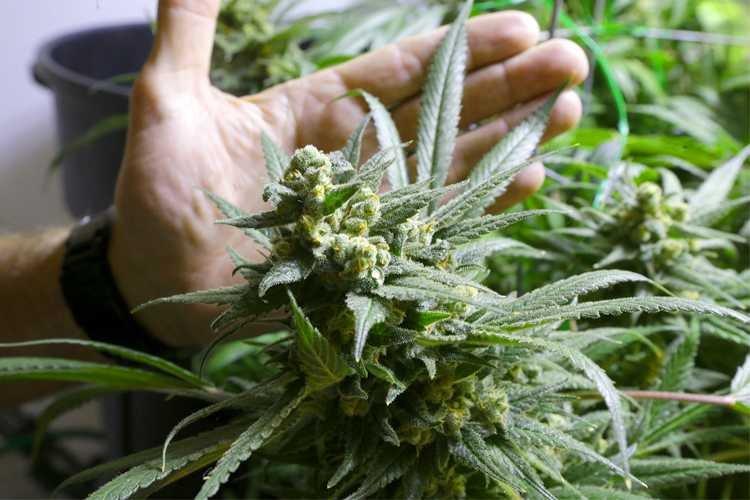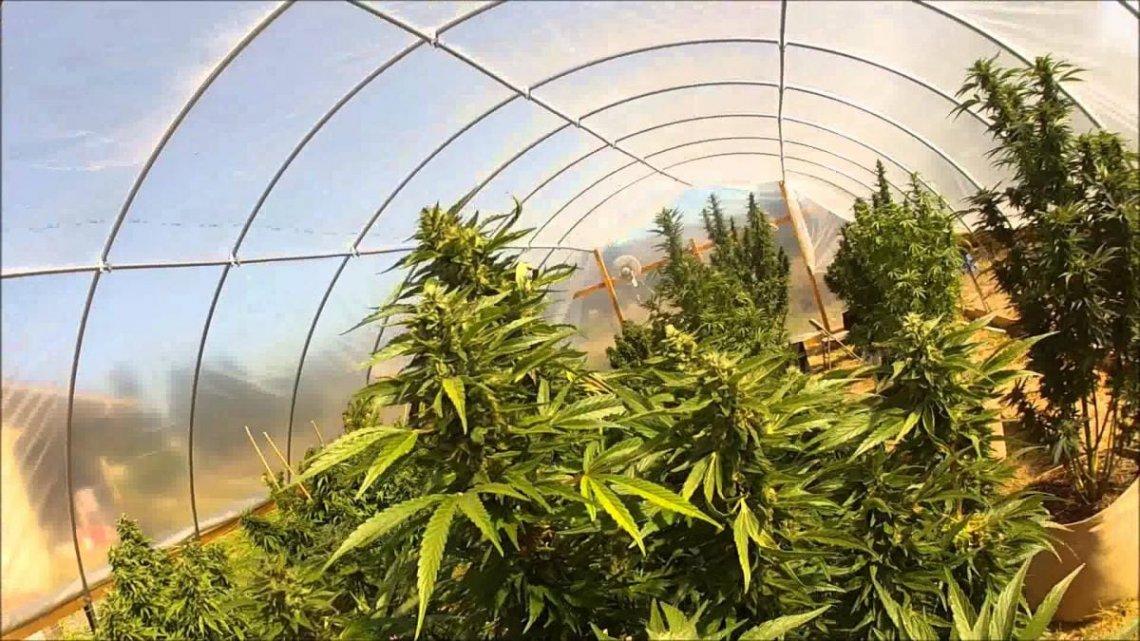REC articles are not the view or opinion of Alpha Extract Administrators
SUNGROWN VS INDOOR CANNABIS CULTIVATION
Blessed with ample sunshine and a conducive climate, Hawaii also has some of the richest, volcanic soil suitable for growing cannabis outdoors. But recent medical marijuana regulations crafted by Hawaiian officials mandate that all cannabis grown for dispensaries must be cultivated indoors.
Several other U.S. states where medical marijuana is legal to have also banned outdoor cannabis cultivation. Even in sunny California, local officials have the option of requiring that cannabis be grown indoors. Much of the cannabis sold in California’s medical marijuana dispensaries are grown under artificial lights. Indoor cultivars are quite popular among cannabis consumers who favor “bag appeal” when shopping for herbs. “Bag appeal” generally refers to trimmed and cured cannabis flower tops with the right combination of appearance, smell, and strain name that resonates with medical patients, blue-collar stoners, and weed snobs.
Most agricultural crops throughout the world are grown solely outdoors: grapes to make wine, for example. It wasn’t so long ago that cannabis was exclusively grown outside as well. That changed because of marijuana prohibition and the need to avoid detection by surveillance helicopters and police. Indoor cannabis cultivation took root in a big way in the United States during the 1980s when the Reagan administration escalated and militarized the war on drugs. Frequent law enforcement raids that targeted outdoor gardens inadvertently helped to jump-start a cottage industry of innovative products and accouterments for growing marijuana indoors—all manner of nutrients, soil amendments, special lights, and various gizmos to control temperature and moisture. Cannabis, a versatile botanical that can thrive under a diurnal or 24-hour light cycle, adapted well to the new indoor environment.
But which cultivation method produces better cannabis—sun-grown or indoors? Is there an appreciable difference in quality between the two? Some cannabis consumers swear by indoors; others prefer outdoors. Here is a breakdown of the pros and cons of each:
SUNGROWN PROS
Low carbon footprint and lower costs: Sungrown cannabis requires far fewer resources and is less expensive to produce than plants are grown indoors. Sungrown uses the natural environment to fuel its growth, and it does not require artificial, high-intensity lighting. Compared to indoor-grown cannabis, sun-grown plants typically require less soil amendments, fertilizers, pesticides, and fungicides. Indoor power usage and water usage are very resource consumption. Evan Mills reports in Energy Policy that an average kilo of cannabis grown indoors is associated with 4600 kilograms of carbon dioxide emissions into the atmosphere. “From the perspective of individual consumers, a single Cannabis cigarette represents 1.5 kg (3 pounds) of CO2 emissions… The energy to produce one marijuana cigarette would also produce 18 pints of beer,” according to Mills, who adds: “There is little if any, an indication that public policymakers have incorporated energy and environmental considerations into their deliberations on cannabis production and use.” Although indoor growers can utilize sustainable energy solutions such as solar power, sun-grown cannabis, with its much lower carbon footprint, will always prevail in the sustainability competition.
Complements the plant’s natural life cycle: For millions of years, plants that undergo photosynthesis have evolved and flourished under the rays of the sun. Scientists report that cannabinoid and terpene production is greatest in ambient light. Natural light is much more complex than what even the best grow lights can mimic. Unlike indoor plants, outdoor cannabis is exposed to a full spectrum of light from the sun, moon, and stars. Outdoor cultivation also enables natural airflow and ventilation; no electric fans are necessary. It’s impossible to duplicate nature’s supreme design when growing cannabis indoors.
Ecology and resiliency: Acclimated to local conditions, unique landrace varietals native to specific bioregions (Acapulco Gold, Panama Red, etc.) have adapted to deal with local pests and other threats. Because outdoor crops are part of the ecosystem, the plant interacts with the elements and this helps to build flexibility and resistance to temperature fluctuations and potential attacks. Healthy plants are less susceptible to the invasion of mold, mildew, and predators in general. Organic farming methods can preserve and enhance the complex biota of the earth’s soil in a way that retains carbon and helps to offset global warming. When growing outdoors, a farmer has more liberties to implement sustainable methods of cultivation, such as the permacultural techniques of companion planting. These methods utilize various natural techniques to sustain a thriving ecosystem: intercropping (with plants that complement cannabis), planting ground cover (which keeps in water and nutrients), and introducing beneficial bugs. Companion planting avoids growing in a monoculture and brings in a variety of plant species to implement complementary natural pest management which contributes to a diverse, healthy ecosystem. This is possible to some degree with indoor growing, but the opportunities for permaculture techniques are limited indoors.
Therapeutic horticulture: Cultivators who work with sun-grown plants get a good dose of nature therapy just by being outdoors. That’s especially important in a society where people are generally disconnected from their natural environment; getting outside can help to balance this deficit. An essential source of Vitamin D and much more, sunlight is intrinsically therapeutic. According to October 2016 study in the Journal of Internal Medicine, sunlight deficiency can be as harmful to human health as cigarette smoking. Outdoor cannabis farmers also benefit from bathing in the symphony of smells and organic aromas indigenous to the local terroir. Plants communicate with each other and their cohabitants, especially insects, by releasing odiferous compounds known as terpenes in response to environmental stressors. Some plant smells attract beneficial bugs; others repel predators. It’s our good fortune that many of the same compounds plants generate under stress have medicinal properties that help human beings cope with stress.
INDOOR PROS
Year-round cultivation: Indoor cultivation isn’t seasonal. With the right set-up, indoor growers could theoretically produce cannabis any time anywhere in the world. They are not limited by adverse environmental conditions that may impact outdoor farmers who can only grow in favorable climates. Indoor cannabis can grow all year round in otherwise inhospitable areas, where dampness and rain would increase the likelihood of mold infestation and disease if the plants were outside. Although the yield of indoor-grown plants is generally less than that of a comparable number of outdoor plants, multiple indoor grows throughout the year will produce more cannabis than an outdoor summer garden.
Control over growing conditions: Indoor cannabis plants are more sensitive than outdoor plants and, therefore, a cultivator must carefully monitor and adjust various factors within a closed, interior grow-room. A skilled indoor grower is able to control all aspects of light, airflow, soil, and nutrients that affect the plants. If done well, this creates an ideal situation for breeding purposes, research and development, and the preservation of unique genetics. For example, if a cannabis cultivar has an attractive purple color that appeals to consumers, indoor production can focus on that characteristic and target it in upcoming generations of the plant’s life cycle.
Product standardization: As the cannabis industry matures, consistency and predictability will be required to standardize a medical product and to gain approval in the pharmaceutical sphere. Standardization is necessary for a reliable, reproducible product that can be researched during clinical trials. In order to achieve such standards and protect plants from unwanted influences, there must be regularity and consistency in every aspect of the growing procedure—water, light, humidity, pest management, etc. This can be very challenging for even the most meticulous outdoor cultivator, as it is difficult to control humidity, fungal infestation, and other environmental factors that can adversely affect a sun-grown cannabis crop.
“Boutique” production: Cannabis consumers want a nice-looking product with a stellar aroma. Dispensaries place a premium on “bag appeal” when displaying cured cannabis flower tops. A skilled indoor grower can carefully manipulate various environmental factors to accentuate desired traits, resulting in cannabis that looks great and smells divine. This in turn translates into a more valuable product when cannabis goes to market. A common misperception is that the potency of cannabis grown indoors is higher than sun-grown cannabis. (“Federal sources as well as independent testing labs actually find similar potencies when best practices are used,” according to Mills.) Yet, indoor cannabis tends to fetch a higher retail price than sun-grown, which costs less to produce. Outdoor growers are able to cultivate their crops with minimal overhead, less equipment, and less electricity, but the lower price tag doesn’t necessarily mean lower quality medicine. Again, it’s largely a matter of perception and bag appeal.
Best of both worlds


Indoor Outdoor in greenhouse
There is a third option for cultivating cannabis, one that combines the best of both worlds, indoors and outdoors. Cannabis thrives in a well-designed greenhouse. A greenhouse grow-op can harness sunlight all year round while allowing a skilled horticulturist to precisely control environmental factors that protect plants from contamination and infestation. The sun’s rays can also be manipulated by a technique known as light deprivation (“light dep”), which can change the daily growth cycle in a greenhouse so that farmers can harvest three or four crops per year—much like indoors but without excessive energy consumption. In many respects, a greenhouse offers the perfect combination of a controlled, consistent growing process that also utilizes natural sunlight.
Whether grown outdoors, indoors, or in a greenhouse, cannabis should be tested for pathogens, pesticide residues, and other contaminants before it goes to market. Cannabinoid and terpene content should also be included on product labels. A true “top shelf” cannabis product would meet all these criteria irrespective of price and bag appeal. There is no reason why cannabis consumers should not have access to a wide array of options in terms of strain type, THC and CBD ratios, modes of administration, and price-point, as well as diverse methods of cultivation. Demand high-quality standards for your medicine, no matter how it was grown. And let’s not forget where cannabis came from the earth.
“One touch of nature makes the world kin.”—William Shakespeare
